Pseudomonas aeruginosa is a pathogenic microorganism that lives in the human body, and under certain conditions can cause severe infectious diseases.
How can you get infected with Pseudomonas aeruginosa, what is the danger of a microbe, and what to do if a Pseudomonas aeruginosa occurs?
What is Pseudomonas aeruginosa
The causative agent, pseudomonas aerugenosa, belongs to the category of opportunistic microbes, that is, those that can normally be present in absolutely healthy people. At a sufficiently high multiplication of microbes is blocked by the intestinal microflora. But with a weakening of the body's defenses and with a massive seeding of pathogenic microorganisms, the bacterium causes a disease.
Pseudomonas aeruginosa is considered the most common "nosocomial pathogen", because. Basically, the infection affects patients who are forced to stay in a hospital for a long time.
Note! Pseudomonas aeruginosa is found in approximately 3-5% of people, while the bacterium is part of the normal microflora.
What is the danger of Pseudomonas aeruginosa:
- The bacterium is often found normally on the mucous membranes, skin, and gastrointestinal tract in absolutely healthy people.
- The causative agent quickly acquires resistance to antibacterial and disinfectants.
- The microorganism is resistant to the external environment: it tolerates UVA rays, temperature changes, lack of nutrients, etc.
- The microbe is widely distributed in the environment, especially in untreated wastewater, in soil, in the intestines of birds, animals, and humans.
- The bacterium can "attach" to non-biological objects (surgical instruments, endoscopes, etc.).
- A colony of microbes forms a specific biofilm that is resistant to adverse environmental factors.
The bacterium enters the human body through mucous membranes and damaged tissues, while the localization of the bacterium depends on the route of its penetration. For a long time, a pathogenic microorganism may not manifest itself in any way, but with a sharp decrease in immunity or injury, the bacterium begins an active attack on the organs and systems of the human body.
When the pathogen and Pseudomonas aeruginosa interact, a Pseudomonas aeruginosa infection is formed, which goes through three stages:
- The bacterium penetrates the tissues and multiplies - the primary focus of infection is formed.
- The pathogen begins to penetrate deep tissues - the infection spreads locally, but its action is still blocked by the body's defenses.
- The microbe enters the systemic circulation, through which it spreads through tissues and organs.
For the emergence and spread of the infectious process, a large number of bacteria is needed, which is impossible under the condition of the normal functioning of the immune system. Therefore, the infection most often affects debilitated patients, the elderly and children.
The microbe is very difficult to destroy - ordinary sanitary measures (treatment of medical equipment, hospital premises, etc.) do not work, and Pseudomonas aeruginosa quickly develops resistance to antibiotics.
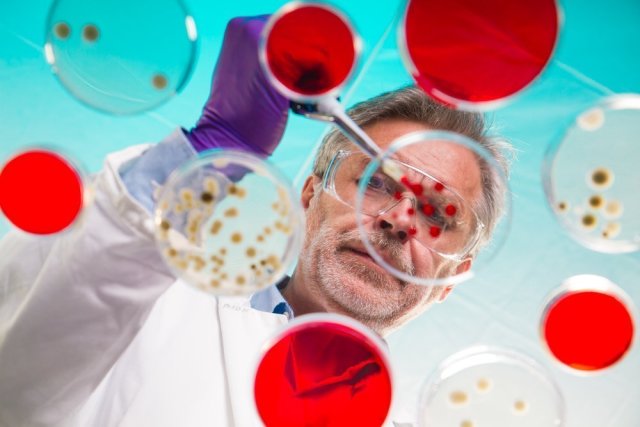
Ways of transmission of Pseudomonas aeruginosa
The source of transmission of the infection is the person himself, who is a carrier of the microbe or is already sick with Pseudomonas aeruginosa infection. In terms of infection, patients with purulent wounds and pneumonia caused by Pseudomonas aeruginosa are of particular danger.
Entrance gates for infection are open wounds, umbilical wound, gastrointestinal tract, respiratory organs, urinary system, conjunctiva of the eyes. The pathogenic microbe quickly adapts in the human body and after infection, the infectivity increases several times, that is, the sick patient is the most dangerous source of infection.
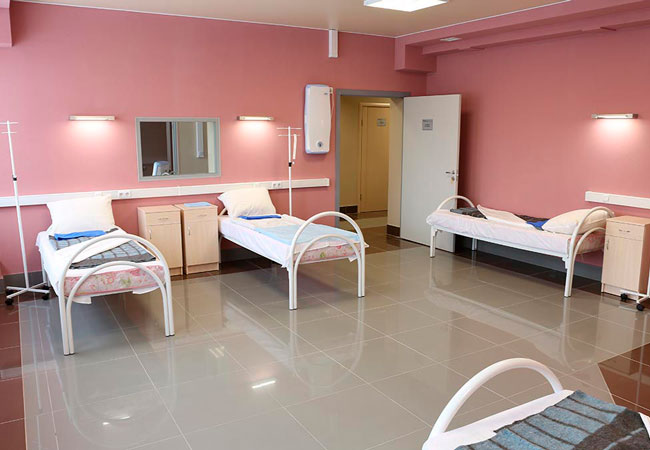
In the conditions of a medical hospital, further transmission of the pathogen is carried out through any objects of the hospital environment and through the medical staff themselves.
Important! Almost 50% of nosocomial infections are caused by Pseudomonas aeruginosa. Factors contributing to the spread of infection in the hospital are the neglect of the rules of antisepsis and asepsis.
How is Pseudomonas aeruginosa transmitted:
- Contact-household way - through household items: doorknobs, towels, toilet bowls, faucets and sinks. In rare cases, the pathogen is transmitted through the hands of medical staff, tools, medical equipment, which have not been sanitized enough.
- Ingestion - through contaminated food and water.
- Airborne - inhalation of air containing a stick.
A person can become a source of illness for himself if he has an immunodeficiency state, and Pseudomonas aeruginosa settled in the intestine earlier. Prolonged antibacterial and hormonal therapy, as well as autoimmune pathologies, can contribute to a sharp decrease in protective forces.
Risk factors for nosocomial infection:
- Long stay in the hospital;
- Therapy with broad-spectrum hormones or antibiotics, carried out for a long time;
- Respiratory diseases (chronic, bronchiectasis);
- The use of penetrating methods of therapy and observation (introduction of a probe into the stomach, artificial ventilation of the lungs, bladder catheterization, etc.);
- Childhood and old age;
- Neurosurgical operations.
Note! The risk group from medical institutions includes burn centers, purulent surgery departments and maternity hospitals.
The emergence of hospital infections is associated not only with a poorly organized sanitary and anti-epidemic regime in a hospital, but also with the constant development of pathogen resistance to disinfectants and antibiotics.
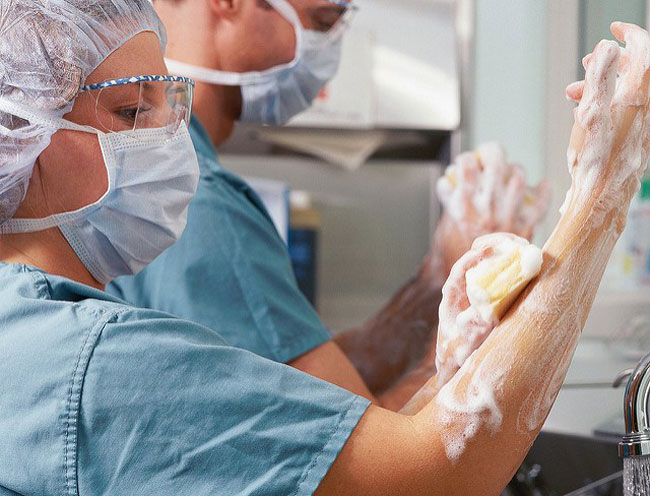
Manifestations and consequences of Pseudomonas aeruginosa
From the moment of infection to the manifestation of the first symptoms of infection, several hours and even days (2-5 days) may pass. The infection can develop in a separate organ or system, but combined lesions can also occur.
Symptoms of infection depend on the location of the pathogen:
- Nervous system. Clinical damage to the nervous system leads to the development of meningoencephalitis and. Both pathologies are quite difficult and often end in death.
- Eyes. The microbe causes ulceration of the cornea, photophobia, profuse lacrimation, severe burning and pain in the eyes. If the inflammatory process passes to the subcutaneous fat of the orbit of the eye, the eyeball begins to protrude from the orbit, and the skin around it becomes edematous and acquires a red tint.
- Zev. Pseudomonas aeruginosa in the throat causes the following symptoms: redness and swelling of the mucous membrane of the throat, inflammation of the tonsils, sore throat, cracks in the mucous membranes of the lips. When the process spreads to the nasopharynx, sticky, mucous discharge from the nose appears.
- Gastrointestinal tract. The infectious process proceeds in the form of food intoxication - vomiting, abdominal cramps, nausea, loose copious stools occur, appetite disappears.
- Nose. Pseudomonas aeruginosa in the nose can lead to prolonged and chronic inflammation of the sinuses (frontitis,).
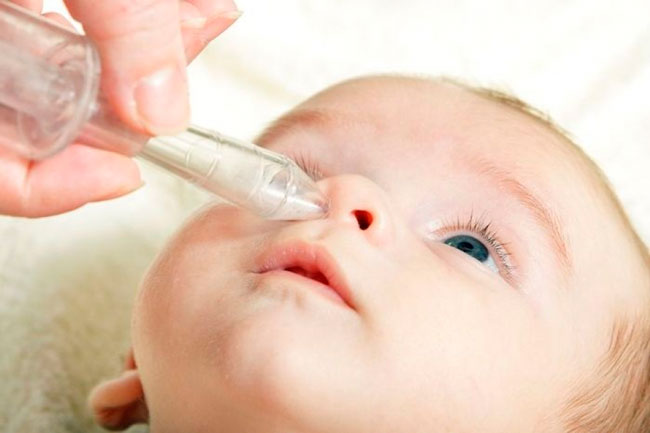
- Skin covers. The pathogen actively multiplies in cuts, wounds, burns, ulcers, which leads to a purulent process. Pus has a characteristic blue color.
- urinary tract. Pseudomonas aeruginosa in the urine leads to the development,. The pathological process is manifested by pain in the lumbar region and lower abdomen, frequent urination.
- Ears. Pseudomonas aeruginosa in the ear provokes purulent, in which bloody and purulent discharges from the ears are observed, hearing impairment occurs, severe pain in the ear is disturbing.
- Respiratory system. Pseudomonas aeruginosa often leads to the development of pneumonia, in which there is a pronounced discharge of purulent sputum, shortness of breath, chest pain. If the infection affects the upper respiratory tract, this manifests itself in the form of the development of chronic and acute,.
- Nails. The causative agent can be localized between the nail plate and the nail bed. Moisturizing promotes the reproduction and growth of bacteria, while the nail plate darkens and softens, and the infection penetrates deeper into the tissues. Pseudomonas aeruginosa on the nails can cause exfoliation of the nail plate, spots of unusual color (brown-brown, blue-green, orange, bright red) may appear on the nail plate. At this stage, treatment should be started urgently to prevent the infection from spreading to the soft tissues of the fingers.
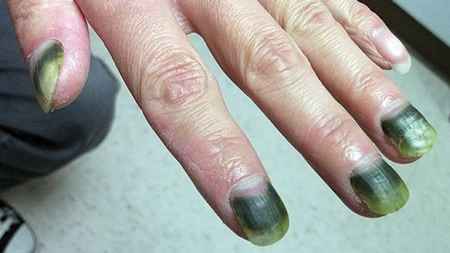
All of the above symptoms are accompanied by a general deterioration in the patient's well-being, fever, weakness, headache.
Pseudomonas aeruginosa infection does not have a characteristic and any specific clinical picture. Suspicions of infection usually arise already at the stage of therapy, when antibiotic treatment does not work.
Therefore, the diagnosis of "pseudomonal infection" can only be made after laboratory tests:
- General analyzes of urine, feces, blood;
- Radiography;
- Lumbar puncture;
- Detection of the pathogen by PCR, bacteriological or serological method.
The consequences of Pseudomonas aeruginosa depend on which organ and system the infection has spread to. These can be: meningitis, pneumonia, purulent otitis media, rhinitis, keratitis, abscess, etc.
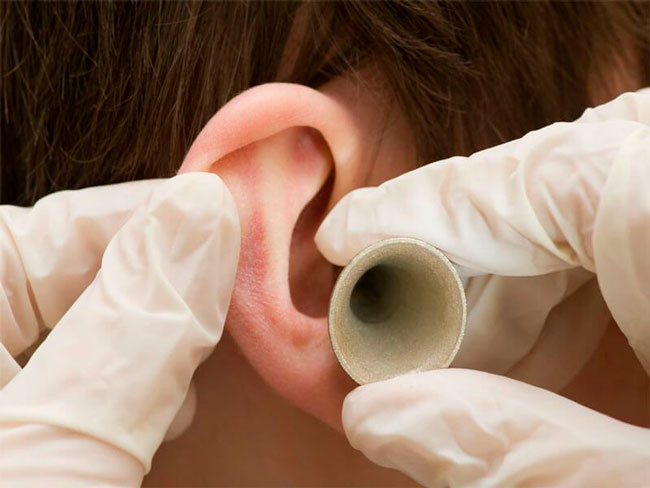
How to Treat a Pseudomonas Infection
Patients with Pseudomonas aeruginosa infection are treated necessarily in a hospital with strict bed rest. The therapy is carried out by a complex method and includes antibiotic therapy, symptomatic treatment, the use of probiotics, restorative treatment and therapy of the underlying disease.
One of the ways to combat Pseudomonas aeruginosa is a set of measures to prevent its formation in the hospital environment: personal hygiene by medical staff, sanitation of instruments, dressings, and change of disinfectants.
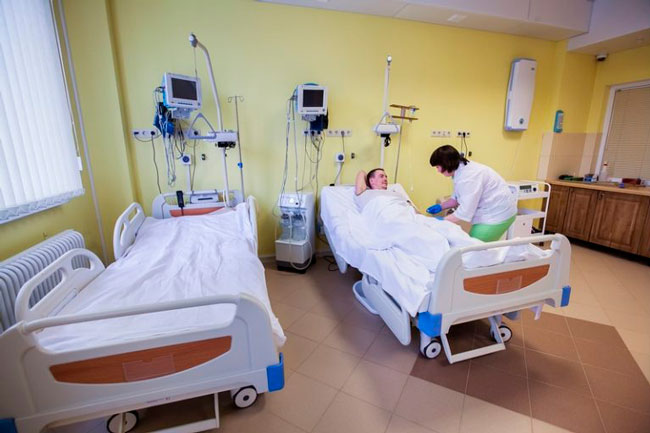 Patients diagnosed with suspected Pseudomonas aeruginosa infection are subject to urgent hospitalization in a specialized hospital, patients are shown strict bed rest for the entire period of clinical symptoms.
Patients diagnosed with suspected Pseudomonas aeruginosa infection are subject to urgent hospitalization in a specialized hospital, patients are shown strict bed rest for the entire period of clinical symptoms. Medical therapy
The use of antibiotics is the main condition for the treatment of Pseudomonas aeruginosa. The choice of an antibacterial agent is made after laboratory determination of the sensitivity of the pathogen to a particular drug.
Most often, the choice falls on antibacterial drugs:
- Ceftazidime;
- Cefepime;
- Carbapenems;
- Amikacin;
- Ciprofloxacin.
First, the drug is usually administered intravenously, and after the first positive results are obtained, the antibiotic is started to be administered intramuscularly. In parallel, if necessary, you can use the local application of antibacterial drugs: the imposition of lotions, ointments, compresses on the affected area.
Note! The duration of drug treatment can be from two to six or more weeks.
During the period of therapy, a bacteriological examination for the sensitivity of the pathogen to antibiotics is repeated. If treatment with antibacterial drugs does not give results within 3-5 days, then the drugs are replaced.
For the effectiveness of therapy, bacteriophage preparations are added to antibiotics. These are special viruses that cause the death of Pseudomonas aeruginosa.
Pseudomonas aeruginosa bacteriophage (intestibacteriophage, pyocyoneus, pyobacteriophage) can be administered as an enema, applications, tampons, orally or injected into various cavities (in the sinuses, uterus, bladder, etc.).
Bacteriophage preparations are selected on an individual basis, and they are treated for 5-14 days, after which the course is repeated if necessary.
To restore normal microflora after illness and the use of antibiotic therapy, probiotics (Lactobacterin, Biosporin, Linex, Acipol) and prebiotics (Lactulose) are prescribed.
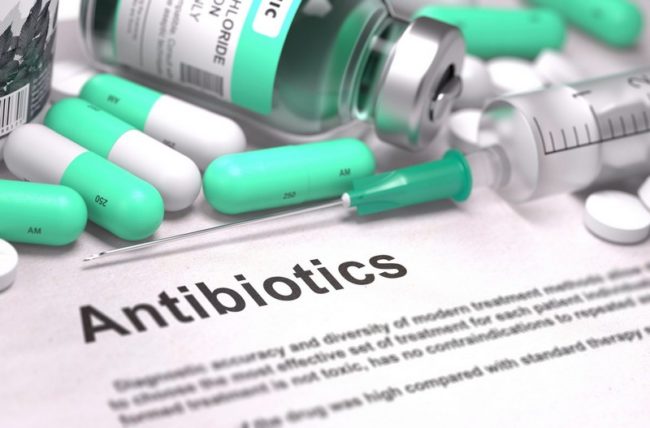
For a general strengthening of the body, a fortified diet, the intake of immunomodulators and vitamin-mineral complexes are prescribed.
Folk remedies
Treatment of Pseudomonas aeruginosa with folk methods has a general strengthening effect on the body and is used in combination with medications, but by no means instead of them.
Folk recipes:
- Kalina. Rub viburnum berries well, and pour a large spoonful of berries on the floor with a liter of boiling water. Infusion drink four times a day before meals for half a glass.
- Tea tree oil. Dissolve a drop of tea tree oil in a teaspoon of ordinary vegetable oil (or olive oil) or drop it into a bread crumb. Take the drug on an empty stomach and drink plenty of water.
- Propolis. Dilute propolis with warm water in a ratio of 1:10. The remedy is used externally, as lotions and compresses on the affected areas of the body.
- Decoction from lingonberry leaves or aspen leaves, bird mountaineer leaves, horsetail leaves, plantain leaves. Any of the listed plants (or each in equal proportions) is taken in the amount of two tablespoons and brewed as tea in a thermos. Drink instead of regular tea, but no more than three times a day.
As lotions or rinses, you can use purchased local preparations: calendula infusion or Chlorophyllipt solution.

Pseudomonas aeruginosa in children
Pseudomonas aeruginosa is 10 times more common in children than in adults. At risk are newborns in the first months of life and premature babies. It is at this age that babies are more susceptible to infection, and therefore prone to infection with a “hospital germ”.
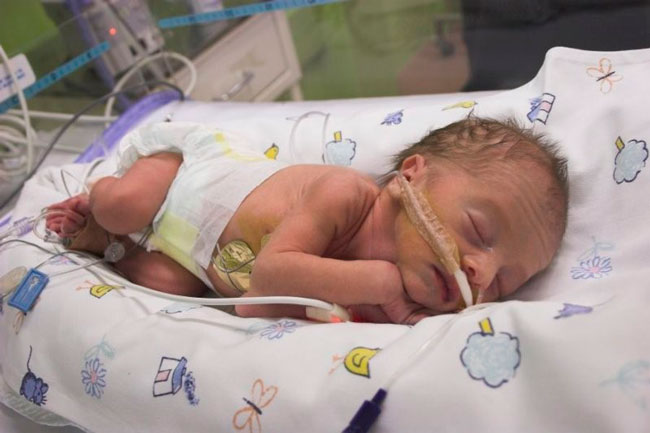
Note! Pseudomonas aeruginosa in infants most often enters the body through the intestines and umbilical cord. The disease is acute and with complications.
At preschool age, the infection most often develops against the background of a weakening of the protective forces, with prolonged treatment with antibiotics, with open burns and wounds.
Pseudomonas aeruginosa in children is treated with antibiotics, while the drug, its dosage and the duration of the course of therapy are determined individually.
In infants, antibiotic therapy must necessarily be combined with breastfeeding, because. mother's milk acts as a probiotic and helps the baby to increase the body's defenses.
Dr. Komarovsky recommends not to get carried away with immunomodulatory drugs for children, but rather to protect children weakened after illness from external contacts, ensure proper nutrition and teach them to follow hygiene rules and norms.

The detection of Pseudomonas aeruginosa is not a reason for treatment if the microbe did not cause an inflammatory process and did not develop into a Pseudomonas aeruginosa infection.
It is extremely difficult to make a prognosis for Pseudomonas aeruginosa, due to the high resistance of the microbe to antibacterial agents and the tendency to chronic long-term course. Even if the pathology is not severe, it significantly worsens the quality of life and is fraught with constant exacerbations.
The success of the treatment of the infection depends on the timely detection of the infection and the conditions of the clinic where therapeutic measures will be carried out.


